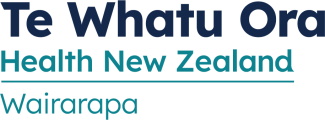Wairarapa Hospital has 74 inpatient beds, and planning bed use is a complex business.
We build on a patient safety matrix that works within our rostered staff resource to allow for an estimated number of urgent presentations versus planned surgery and resident medical patient cases. Sometimes, as we have recently experienced, we see an unexpected increase in unplanned, urgent trauma and illness presentations that tip that balance.
When that happens, we have more patients than we have beds and staff for. We call this a Code Red.
To manage, we are forced to look at finding more beds, bringing in more staff and, as a last resort, rescheduling elective surgeries.
In a Code Red, we can repurpose our small, short stay unit beds to use for admitted patients, and we can bring in extra staff, but this is simply not sustainable long term. We also work hard to assess inpatients, discharging as appropriate and freeing up beds.
When we have a lot of urgent need, it puts pressure on staff and patients alike. Patient safety is first and foremost, and all our decisions are made with the patient at the centre.
Delaying surgical appointments is the last approach taken – but it is sometimes unavoidable.
The considerable inconvenience for someone in having their surgery delayed is well understood – so our patients can be assured that, if it happens, we have had absolutely unavoidable reason to reschedule.
But there is more to surgical delays than just a busy day at the hospital. Wairarapa Hospital being under pressure is not just down to an influx of seasonal illness and acute injury – there is a bigger picture at play.
The broader context of continuing industrial action, staffing vacancies and recruitment challenges, and high numbers of low acuity patients all adds complexity.
At Wairarapa Hospital, we are now exceeding the Ministry of Health guideline for 4 months wait for planned surgeries.
When we have to delay surgery, our wait lists grow. This causes extra work for staff to reschedule lists, and causes a lot of disruption for our waiting patients.
It also means the time it will take to ‘operate our way out’ is pushed out, because our normal, business as usual demand does not stop in the meantime to let us catch up.
Our waitlists can grow quickly, but they shrink slowly.
So why do we have long waitlists?
Our growing waitlists are not just because of Code Red days. Industrial action also takes its toll.
We have had a long spate of different workforce strikes lately, which we have to plan theatre lists and clinics around. When we are managing the impact of staff on strike, we have to delay surgery.
And we also have a shortage of Senior Medical Officers (SMOs), particularly General Surgeons and Orthopaedic Surgeons and our Allied Health specialties, like Sonographers.
Wairarapa is not alone in its specialist clinical staffing issues, there are nationwide shortages. The strong market competition makes recruiting to Wairarapa increasingly difficult.
Current clinical staffing restraints has resulted in a rapid rise in wait lists for orthopaedic procedures especially. This means waiting patients may experience pain for longer, and have an extended loss of function.
We know that, because of the extended wait lists, some people will be waiting many months for routine surgery.
What are we doing to address these issues?
We are putting a lot of effort into recruiting.
We aim to hire into roles and be at full capacity. We want to have sufficient staffing to allow us to deal with acute emergent demand (business as usual emergency care) as well as manage our planned work (elective surgeries).
We are having some recent success with multiple interviews, many of them from global applicants, and we are optimistic we can recruit to positions sooner rather than later.
We are also looking into more efficient regional collaboration.
Having a well-connected regional service is very important for Wairarapa. We rely on our neighboring tertiary hospitals to provide care for our community that we can’t provide locally, and ensuring we are doing all we can to provide a seamless, efficient service is critical.
What can the community do to help?
We know that we have high numbers of people being treated in our hospital that could be just as easily seen by their GP or medical practitioner. We don’t like to turn people away from our ED, but when we have people to treat that are low acuity (non-urgent) it takes time away from those acute cases we really do need to see. If they then go on to be admitted, they take a bed that could otherwise be filled by higher-need patients.
People can help by seeking care where it is best delivered. If it is URGENT, call 111 or come to ED. If it is not, call Healthline on 0800 611 116, see your doctor or medical professional, or go to Wairarapa After Hours at Masterton Medical.
And of course, be a healthy Kiwi! Do what you can to keep yourself well, manage your health and, if you notice something amiss, get checked out early.
For more information:
Email anna.cardno@wairarapa.dhb.org.nz


